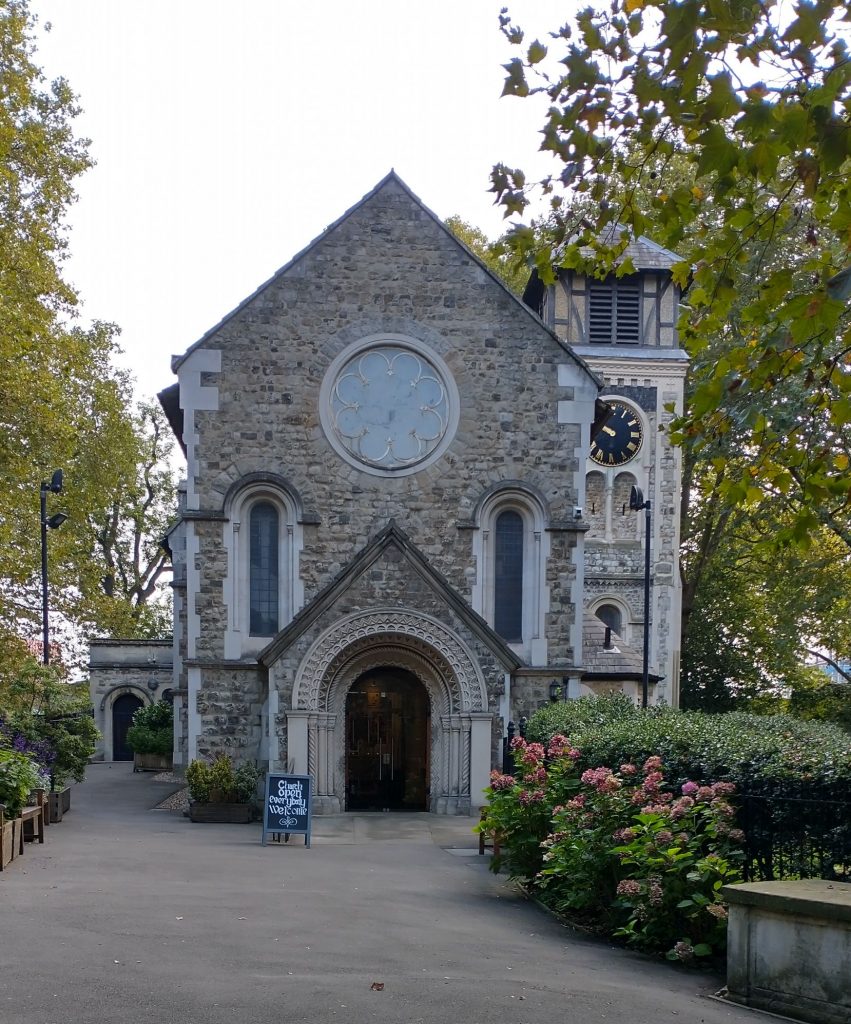
Pancras means ‘all-powerful’ in Greek. St Pancras was a 14 year old who refused to give up his Christian Faith during the persecution of Christians by the Emperor Diocletian. He was beheaded on the Via Aurelia, traditionally, on 12 May 303 AD. His youth makes him the Patron Saint of children, but he is also the patron saint of jobs and health, and ‘invoked’ against cramps, false witnesses, headaches, and perjury. His body was buried in the Catacombs, but his head is kept in a reliquary in the Church of Saint Pancras in Rome, where he was buried.
Pope Gregory is said to have given St Augustine relics from St Pancras when his mission came to Kent in 597AD. They built a church dedicated to St Pancras, ruins of which can be found in the grounds of what is now St Augustine’s. Canterbury.
This story is partly responsible for the claims that St Pancras Old Church (pictured above) is a very old foundation. The idea being that there was a late Roman place of worship here. But there is very little solid evidence for this. It is also argued that, if it isn’t late Roman, then it dates to just after 604AD when St Mellitus, sent by St Augustine, established St Pauls Cathedral, and St Pancras Church. St Pancras’ Church was a Prebend of St Pauls Cathedral, but this is not evidence it was established as early as the Cathedral was. (a Prebend provides the stipend (pay) to support a Canon of a Cathedral).
When the Church was restored, the architects said it was mostly Tudor work with traces of Norman architecture. However, the suggested finding of a Roman tile or two, reused in the fabric, is used as evidence to keep the legend going.
If you read the Wikipedia page you will see evidence of two strands to the contributions, one trying to play down the legends of its early foundation, and, another trying to keep hold of its place as among the ‘earliest sites of Christian worship’.
Read the wikipedia page here: https://en.wikipedia.org/wiki/St_Pancras_Old_Church
It is a lovely Church, on an impressive site, with links to Thomas Hardy, and Sir John Soane whose tomb is the design inspiration for the iconic Red Telephone Box.
Discover more from And Did Those Feet
Subscribe to get the latest posts sent to your email.
